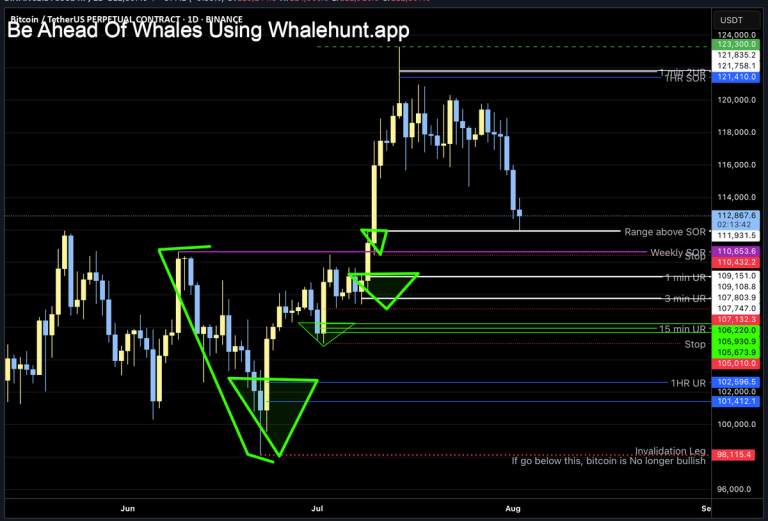
The Evolving Landscape of Bitcoin in 2025
A New Era of Big Tech Involvement
In the ever-changing world of cryptocurrency, Bitcoin continues to be a beacon of innovation and investment. As of 2025, the landscape is shifting dramatically with big tech giants like Amazon and Google playing a significant role in Bitcoin’s scalability. These companies now power 45% of the Bitcoin Lightning nodes, a development that underscores their growing stake in the future of digital currency[1]. This involvement is not just about technological advancement; it represents a strategic move towards integrating Bitcoin into mainstream financial systems, potentially revolutionizing how we think about money and transactions.
The Lightning Network, a layer-2 solution built on top of Bitcoin, aims to solve the scalability issues that have long plagued the cryptocurrency. By enabling faster and cheaper transactions, it opens up new possibilities for everyday use. The entry of Amazon and Google into this space is a testament to the growing confidence in Bitcoin’s potential to become a viable alternative to traditional payment systems.
The x Deal and New Liquidity Opportunities
Another significant development in 2025 is the x deal, which promises new liquidity and yield opportunities with M-BTC integration. This integration is set to enhance the liquidity of Bitcoin, making it more accessible and attractive to a broader range of investors. The x deal is not just about increasing the supply of Bitcoin; it’s about creating a more robust and flexible financial ecosystem that can adapt to the needs of modern investors.
The M-BTC integration is particularly noteworthy because it allows for the creation of synthetic assets that can be traded on various platforms. This opens up new avenues for investors to diversify their portfolios and take advantage of the volatility in the cryptocurrency market. The x deal is a clear indication that the Bitcoin community is thinking beyond just the coin itself and is looking at ways to create a more comprehensive financial infrastructure.
Bitcoin’s Resilience in a Turbulent World
Bitcoin’s resilience in the face of global turmoil is another key factor to consider. Despite geopolitical tensions and economic uncertainties, Bitcoin has managed to maintain its value and even show signs of growth. This stability is a testament to the growing trust in Bitcoin as a safe haven asset. As traditional markets fluctuate wildly due to geopolitical events, Bitcoin stands firm, offering a sense of security to investors.
For instance, during the Iran-Israel conflict, while other markets were in turmoil, Bitcoin remained relatively stable. This stability is not just a coincidence; it’s a result of the decentralized nature of Bitcoin, which makes it less susceptible to the kind of manipulation and volatility that plague traditional financial systems. This resilience is one of the key reasons why more and more investors are turning to Bitcoin as a store of value.
Technical Analysis and Market Trends
Turning to the technical side, Bitcoin’s price movements in 2025 show a pattern of resilience and potential for growth. The cryptocurrency is rebounding from the support trendline of the ascending triangle pattern, with the Ichimoku Cloud acting as a resistance barrier above the price. A breakout above the cloud and the pattern’s supply zone would signal a bullish trend, indicating that Bitcoin is poised for significant upward movement[2].
The Elliott Wave theory also suggests that the current movements in Bitcoin’s price are part of a larger correction phase, which could lead to a significant bull run. According to this theory, the recent price movements are just the first wave of growth, with the potential to reach as high as $160,000. This analysis, while speculative, provides a hopeful outlook for Bitcoin investors.
The Role of Altcoins and Forks
While Bitcoin remains the dominant player in the cryptocurrency market, it’s essential to acknowledge the role of altcoins and forks. Bitcoin Cash (BCH), for example, has shown a 40% increase in the last three months, demonstrating slow but steady growth. BCH’s success as a Bitcoin fork highlights the potential for other cryptocurrencies to carve out their own niches in the market[3].
Altcoins like Solana (SOL) and other emerging tokens are also showing strength on lower timeframes, indicating that the cryptocurrency market is diverse and dynamic. While Bitcoin may be the flagship, the ecosystem is rich with opportunities for innovation and investment.
The Future of Bitcoin Mining
Bitcoin mining is another critical aspect of the cryptocurrency’s ecosystem. In-depth analyses of Bitcoin miner valuation discuss factors like HODL strategies, self-mining, fleet value, and infrastructure. These analyses provide valuable insights into the operational and financial health of Bitcoin mining operations, which are crucial for the long-term sustainability of the network[4].
The power pipeline and infrastructure of mining sites are essential considerations for investors and stakeholders. As the demand for Bitcoin continues to grow, so does the need for efficient and sustainable mining practices. The future of Bitcoin mining lies in balancing profitability with environmental responsibility, a challenge that the industry is actively addressing.
Conclusion: The Road Ahead
In conclusion, the year 2025 marks a pivotal moment in the evolution of Bitcoin. With big tech giants like Amazon and Google playing a significant role in its scalability, new liquidity opportunities emerging, and a resilient performance in the face of global turmoil, Bitcoin is poised for continued growth and innovation. The technical analysis and market trends point to a bullish outlook, while the role of altcoins and forks adds depth to the cryptocurrency ecosystem.
As we look to the future, it’s clear that Bitcoin is more than just a digital currency; it’s a symbol of financial innovation and resilience. The road ahead is filled with opportunities and challenges, but one thing is certain: Bitcoin will continue to be at the forefront of the financial revolution.
[1]: Amazon & Google now power 45% of the Bitcoin Lightning nodes, revealing big tech’s growing stake in Bitcoin’s scalability
[2]: #BTC/USDT ANALYSIS
[3]: #BCH price analysis
[4]: In depth Bitcoin Miner Valuation Analysis








